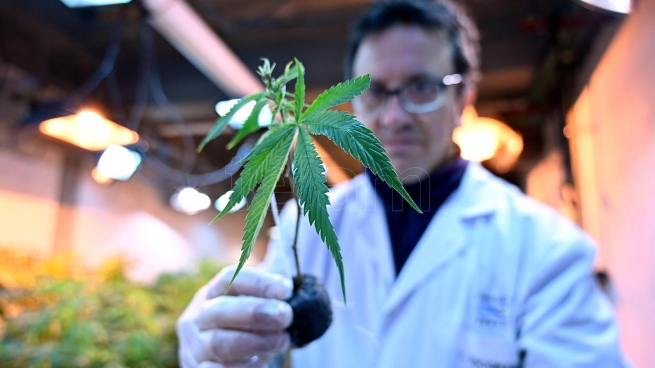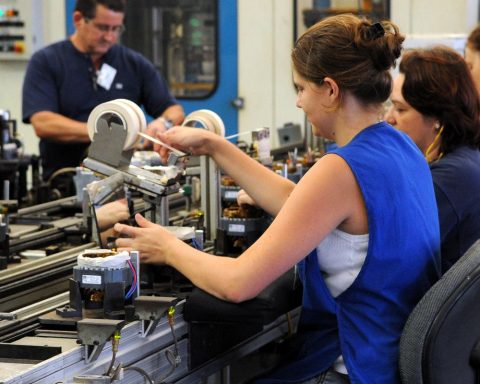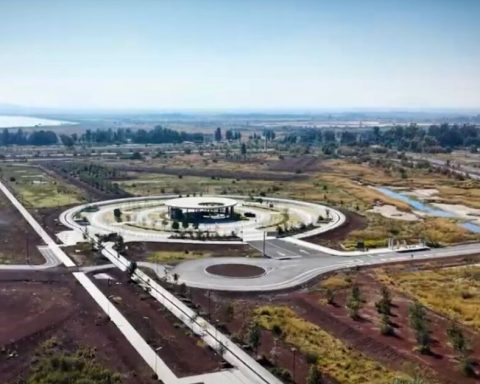The Law that regulates the industrialization of cannabis, promulgated by the Executive Power this week, will give a new impetus to research, both ongoing and new, which will be added to the 29 studies on the properties of the plant and its derivatives that are already they were approved by the State within the framework of a previous regulation, dating from 2017.
“The recent Law No. 27,669 (called the Regulatory Framework for the Development of the Medicinal Cannabis and Industrial Hemp Industry) does not replace the previous one (No. 27,350), but rather complements it,” biologist Carla Arizio explained to Télam. coordinator of the Phytogenetic Resources Area of the Institute of Biological Resources of INTA (National Institute of Agricultural Technology).
“In fact,” he continued, “the new law expressly states that crops and projects planned and authorized under Law No. 27,350 are excluded from this regulatory framework. This means that Projects that have already been authorized will be governed by the regulations by which they were approved.“.
In other words, while Law No. 27,350 focuses on research into the plant and its derived products, Law No. 27,669 -promulgated this week- seeks to strengthen and regulate the industry that will be generated from medicinal use.
But the new law does not reach a desert ground: there are at least 29 formalized research projects in the Ministry of Health that focus mainly on plant studies14 of which are carried out in agreement with INTA, the only body authorized by Law No. 27,350.
“In addition to those of us who work from INTA, there are other projects conducted by universities, provinces, municipalities and private companies that could be included from Regulatory Decree No. 883, of 2020, which enabled other actors to investigate medicinal cannabis,” he told Tel.
Aricio, who has a degree in Biological Sciences and a doctorate from the UBA, recalled that this Decree establishes that “those research projects that do not involve the production of phytopreparations or the analysis of clinical trials can be carried out in scientific and technical organizations, following regulations internal”.
In addition, he mentioned that INTA has agreements to carry out various projects with municipalities such as Bariloche; provinces like Jujuy; organizations like Medicinal Cannabis Origin San Juan (Canme), in San Juan; as well as agreements with NGOs such as Medicinal Cannabis Argentina (Cameda).

In this context, different projects conducted by universities have a strong local imprint, both at the country and regional levels.
This is the case of the project of the Institute of Bioprospecting and Plant Physiology (Inbiofiv), dependent on the Conicet NOA and the National University of Tucumancalled “Chemical, physiological and biological study of cannabis sativa (sativa variety and indica variety) cultivated in Tucumán, to obtain products for medicinal use”.
The study, led by the director of the Institute, María Inés Isla, seeks to work exclusively with plants that grow in the province.

Another of them, also endorsed by the health portfolio, is the one that will be developed -financing through- in the National University of Patagonia San Juan Bosco (Unpsjb), under the name “Promotion of the Cultivation and Production of Cannabis and its derivatives for scientific, industrial, medicinal and/or therapeutic purposes”, for which the Esquel Biotechnology Institute (Inbies) and the CCC National Patagonian Center collaborate. CENPAT, dependent on Conicet.
“The aim is to determine the strains of cannabis for medicinal and industrial purposes (hemp) that best adapt to the Inbies – Unpsjb property defined to develop cultivation and production activities,” Dr. Oscar Troncoso, director of Inbies and member of the Secretariat of Science and Technology of that Patagonian university.
“This will allow the design of a safe and standardized platform for the cultivation of cannabis and its subsequent industrialization, to be applied to research and in the treatment of different ailments. It will also allow the development of industrial inputs, whether for textile fibers, industrial oils or animal consumption. , and ecosystem services such as phytoremediation of contaminated soils or as CO2 sinks,” Troncoso continued, later clarifying that they already have authorization from the National Seed Institute (Inase) as a “nursery producer under controlled conditions.”

From Puertos Madryn, the CENPAT CCT also works in other lines, ranging from scientific research to oil production.
That’s what the doctor said Gregory Bigattiprincipal investigator of Conicet and coordinator of the Medicinal Cannabis program of the CCT CENPAT.
“We make indoor cultivation (indoors, with lamps), outdoor Y nurseries. With the flowers we make the oils with which we will work in clinical trials when we have authorization from the Ministries of Health of the Nation and Chubut. We seek to provide them so that doctors can work on three axes: insomnia, anxiety and chronic pain,” he explained.
And he clarified that they already have concentrates to study 250 patients during three months.

They also develop cultivarswhich are the varieties of different cannabis genetics, with more THC (more suitable for pain management), more CBD (aimed at neurological conditions) or a mixture, of which they already have six that are being registered in Conicet.
On the other hand, they could go on to obtain “a kind of seed scanner, by analyzing their geometric morphometry, because we notice by seeing their shape that we can realize what type of cannabinoids the mother plant will have later, if it will have more THC or more CBD “.
Lastly, he emphasized that they seek “to use the whole plant rather than the purified ones, to have a national model and not to copy other countries.”
Cannabis in patients with refractory epilepsy
Beyond the 29 investigations approved by the National Ministry of Health, focused on the properties of the crop and its derivatives, studies are being carried out in Argentina to evaluate the effectiveness, safety and tolerability of cannabis in patients with refractory epilepsy at the Garrahan Hospital and in El Cruce by Florencio Varela.
STUDY IN “EL CROSSROADS”
Silvia Kotchen, coordinator of the Medicinal Cannabis Network (Racme) and who directs the research that is being carried out in El Cruce, explained to Télam that the study they are carrying out is of an “observational” type and that they expect the first results in the next months.
“The studies that are carried out today, both globally and locally, are not double-blind and do not seek the registration of the product as requested by ANMAT as with traditional drugs,” said Kotchen, who is also director of the Execution Unit of Studies in Neurosciences and Complex Systems (ENyS).
In this context, Resolution 781/2022, of last April 7, which enabled the creation of the new category of plant products based on cannabis and its derivatives intended for use in human medicine, “opens up possibilities for beginning to make different clinical trials that guarantee the quality of the products, but fundamentally their efficacy in different pathologies”, affirmed the specialist.
The coordinator of the Racme specified that “there is only one double-blind study in the world approved by the Food and Drug Administration of the United States (FDA, according to its acronym in English) and therefore there are two registered products in Argentina that are generics of the approved drug”.
GARRAHAN HOSPITAL
The other study carried out in the country on effectiveness in patients is carried out at the Garrahan Hospital.
In September 2021, the health center reported that the use of medicinal cannabis “had a high impact” and that the studies “confirmed CBD as an extremely valuable therapeutic tool as an adjunct to treatment in children with refractory epileptic encephalopathies.”
The results indicated that its use “also contributed to improving cognitive, behavioral and motor aspects, resulting in an improvement in the quality of life, both for patients and their families,” highlighted the health center
Experts agree that Argentina is “well positioned” in terms of medical cannabis research and that there is a kind of “explosion” of projects, which will be strengthened after the enactment of the new Law No. 27,669.
Some seek to advance in financing to work more quickly. But the range is widening, the human resource is there and the effort to advance and gain autonomy, too.


















